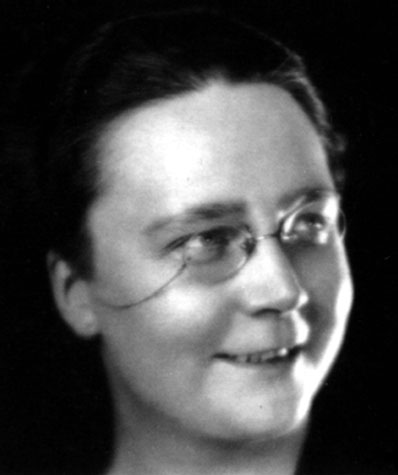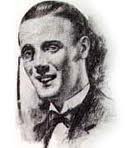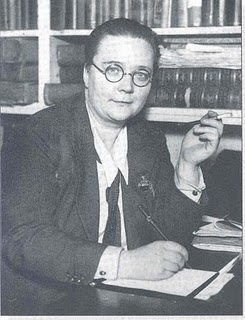 Dorothy Sayers is one of the greatest English writers who ever lived. Women today should rediscover her theological essays. She is a joy to read. Her thoughts are clearly stated with insightfulness and wit.
Dorothy Sayers is one of the greatest English writers who ever lived. Women today should rediscover her theological essays. She is a joy to read. Her thoughts are clearly stated with insightfulness and wit.
Of course, all of the Lord Peter Wimsey mystery novels are superb entertainment. They are all still in print and very popular. Here is a list of them, easily obtained from Amazon.com or other booksellers, in chronological order:
Whose Body?, 1923
Clouds of Witness, 1926
Unnatural Death, 1927
The Unpleasantness at the Bellona Club, 1928
Lord Peter Views the Body, 1928 (A collection of early short stories)
The Documents in the Case, 1930
Strong Poison, 1930
The Five Red Herrings, 1931
Have His Carcase, 1932
Murder Must Advertise, 1933 (My favorite. Especially witty.)
Hangman’s Holiday, 1933
The Nine Tailors, 1934
Gaudy Night, 1935 (Especially interesting for her views on women.)
Busman’s Honeymoon, 1937 (Originally a play.)
In the Teeth of the Evidence, 1939 (A collection of short stories.)
There are other books that Miss Sayers contributed short stories to and these are easily found at major booksellers.
About the time that she finished most of her mystery novels, 1939, Dorothy Sayers began to turn to writing on more serious subjects. She was concerned that the Faith was being watered down in her day. She wrote many essays and lectured many times on the importance of having a sound theology which pays attention to the doctrines and creeds that the Church has kept for many years. A naïve religion is dangerous; it does not tell the whole truth about Christ or His teachings. And the fact of the matter is – the story of Christ is the most exciting story in the world.
It is still true today that people are looking for a religion that is easy to swallow.
Miss Sayers was able to convey in a captivating way just why we need to get serious about the essentials of the Faith. I believe that she has chided us in a gentle and humorous way that would be inoffensive to anybody, unless they have just made up their minds to throw the whole of our comprehensive faith out of the window. There is nothing that would convince that person. But if you, or a friend, would like to understand why the church should rediscover the creeds and confessions and teach them, check out the following books.
 Begin Here, 1940 – This is subtitled, “A Statement of Faith”. Dorothy Sayers wrote this book when World Was II was in its early stages. She meant it specifically for the people of Great Britain, but we can all learn from the principles that she puts forth. How will we ever have peace in this world? In her preface she says, “This book does not pretend to offer any formula for constructing an Earthly Paradise: no such formula is possible. It suggests only that there is at present something incomplete about the average human being’s conception of himself and society, and that the first step towards constructing the kind of world he wants is to decide the kind of person he is, and ought to be.” In other words, we must be right individually in our hearts first. We cannot impose freedom from the outside.
Begin Here, 1940 – This is subtitled, “A Statement of Faith”. Dorothy Sayers wrote this book when World Was II was in its early stages. She meant it specifically for the people of Great Britain, but we can all learn from the principles that she puts forth. How will we ever have peace in this world? In her preface she says, “This book does not pretend to offer any formula for constructing an Earthly Paradise: no such formula is possible. It suggests only that there is at present something incomplete about the average human being’s conception of himself and society, and that the first step towards constructing the kind of world he wants is to decide the kind of person he is, and ought to be.” In other words, we must be right individually in our hearts first. We cannot impose freedom from the outside.
The Mind of the Maker, 1941 — In this book, Sayers reminds us that we are made in the image of God and that one of the main ways that we reflect God’s image is in our creativity. A review by Doug Thorpe summarizes the book well, “Beginning with some stingingly humorous words for the education process (which has produced, she says, “a generation of mental slatterns”) she then explores the Trinitarian nature of creativity. Here she identifies the Christian concept of the Holy Trinity–God, Son, Holy Spirit–with three elements of creation. First, the Idea: “passionless, timeless, beholding the whole work complete at once, the end in the beginning”; then the Creative Energy: “begotten of that idea, working in time from the beginning to end,” manifesting the Idea in matter; and finally the Creative Power: “the meaning of the work and its response in the lively soul”–in essence, what she calls “the indwelling Spirit.”
In a plain, matter-of-fact style that readers will recognize from her mysteries, she reflects on the question of free will and miracle, evil, and, ultimately, “the worth of the work.” It is especially here, I think, in this final chapter that the book remains both timeless and profoundly timely. The artist stands for the true worker, she writes, who, while requiring payment for his work, as an artist “retains so much of the image of God that he is in love with his creation for its own sake.” So too, ultimately, should it be for all human work: “That the eyes of all workers should behold the integrity of the work is the sole means to make that work good in itself and so good for mankind. This is only another way of saying that the work must be measured by the standard of eternity.”
In a day when work is only a means to obtain money, we need to recapture this vision of work. Because we have lost the correct emphasis on the value of work, it is hardly surprising that workmanship is shoddy, products we purchase break or don’t fulfill expectations, and people have just turned into consumers.
Unpopular Opinions, 1946 — There are twenty-one essays in this book, seven are theological – “Christian Morality”, “Forgiveness”, “What do We Believe?”, “Divine Comedy”, “A Vote of Thanks to Cyrus”, “Towards a Christian Aesthetic”, and “Creative Mind”. In her essay on the “Christian Aesthetic” Miss Sayers again shows how “Art Proper” is based on the Trinitarian doctrine of the nature of the mind of the Creator. Her insights are as intellectually cogent as any that have been written. The remaining essays are on political topics and literary criticism.
Creed or Chaos?, 1949 – The title of this book is self-explanatory. The essays included show that the greatest, most exciting story ever told is the Incarnation, death, and resurrection of the Lord Jesus Christ. Dorothy had written a play called, “The Zeal of Thy House”, about the burning and rebuilding of a church “choir” during the twelfth century. In it she explored the theological implications of work, integrity, and the human heart. Students asked her about the dogmas which were presented, particularly the doctrine of the Incarnation. She was amazed at the lack of understanding on the part of Christians about the creeds. Her response is that the church needs to learn again that there is nothing so “interesting, so exciting, and so dramatic” as the “orthodox Creed of the Church.” One might think that the topic is dry and stuffy, but I guarantee you that you won’t find Dorothy Sayers’ treatment of it boring!
The Emperor Constantine, 1951 — In this great theological work, Dorothy presents in dramatic fashion, the life of the Emperor Constantine. She is particularly interested in one of the central doctrines of the Christian Faith – the nature of Christ. At the famous council of Nicaea, held during the time of Constantine, the official doctrine concerning the deity and humanity of Christ was adopted and has remained a central truth for Christians ever since. The fact that Christ is totally divine and totally human at the same time is a mystery, but one that is accepted by all orthodox Christians.
The other issue addressed in the play is about Church and State. How much power does either one wield over the other? What is the place created by God for each? This question has been debated for nearly seventeen centuries since Constantine made Christianity the state religion. This is one of the most exciting historical subjects ever for students of religion.
There are many good anthologies published containing Dorothy Sayers’ essays.
Are Women Human?, (Wm. B. Eerdmans, Publisher, 1971). This book contains two wonderful essays on Dorothy Sayers’ thoughts on the role of women in society. See my previous blog posting for more on this.
The Whimsical Christian. Edited by William Griffin, 1978. This book is subtitled, “Reflections on God and Man by the Creator of Lord Peter Wimsey”. This contains some of her deepest and most insightful works including, “Strong Meat”, “The Other Six Deadly Sins”, and various other readings.
A more recent publication is “Letters to a Diminished Church”, published by Thomas Nelson Publishing Group in 2004. This also contains many of the same essays as well as the important “Why Work?”.
It is about time to put Dorothy Sayers’ works on our shelves next to other theological books. There are very few writers who talk about the important things in life in such a dynamic and incisive way with so much lucidity and wit. The things that she has to tell us are timeless. In our day of “easy believe-ism” we need her admonitions more than ever.
Somehow or other, and with the best intentions, we have shown the world the typical Christian in the likeness of a crashing and rather ill-natured bore — and this in the Name of One who assuredly never bored a soul in the thirty-three years during which He passed through this world like a flame.
Let us, in Heaven’s name, drag out the Divine Drama from under the dreadful accumulation of slipshod thinking and trashy sentiment heaped upon it, and set it on an open stage to startle the world into some sort of vigorous reaction. (From Dorothy L. Sayers, “The Dogma is the Drama”)

